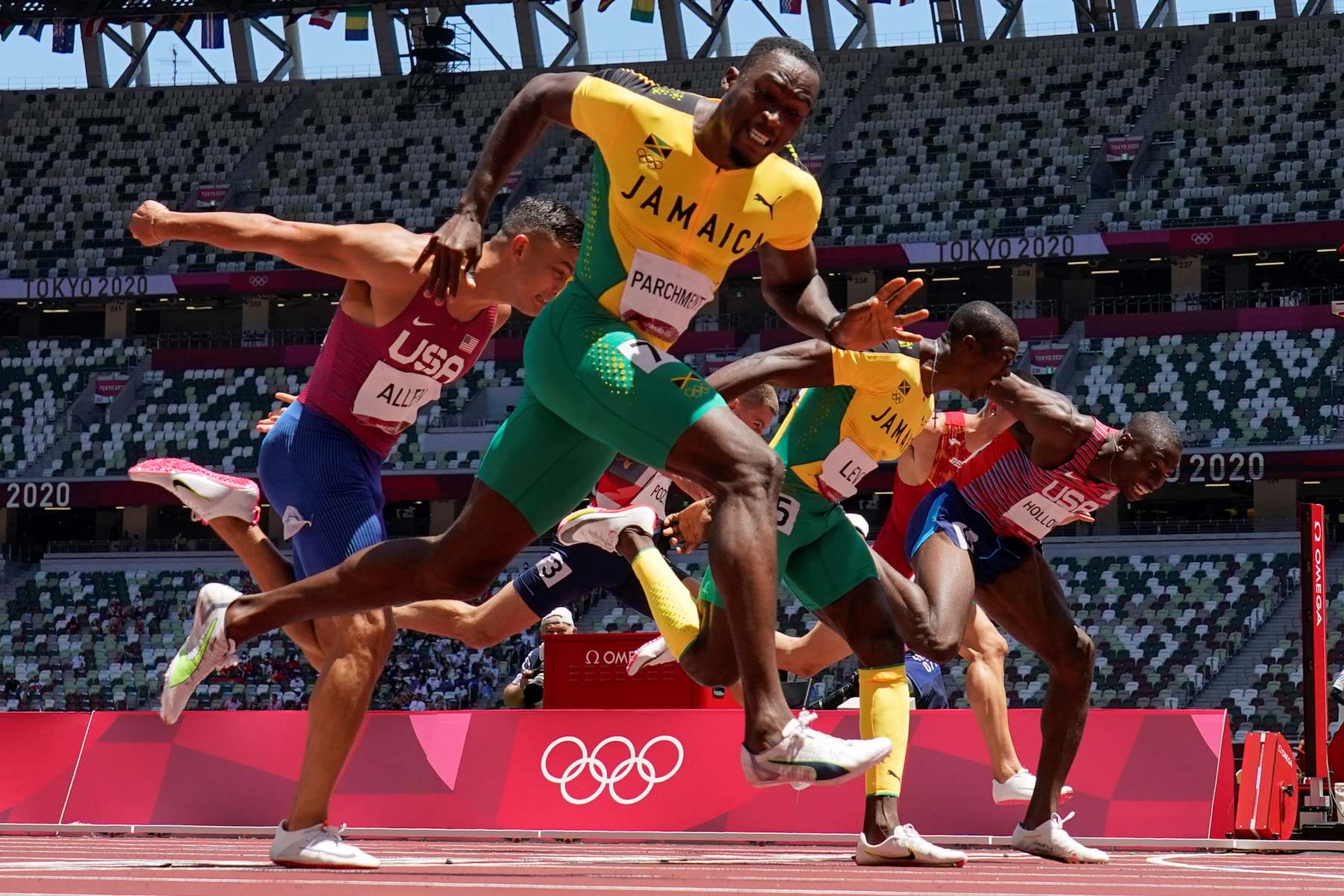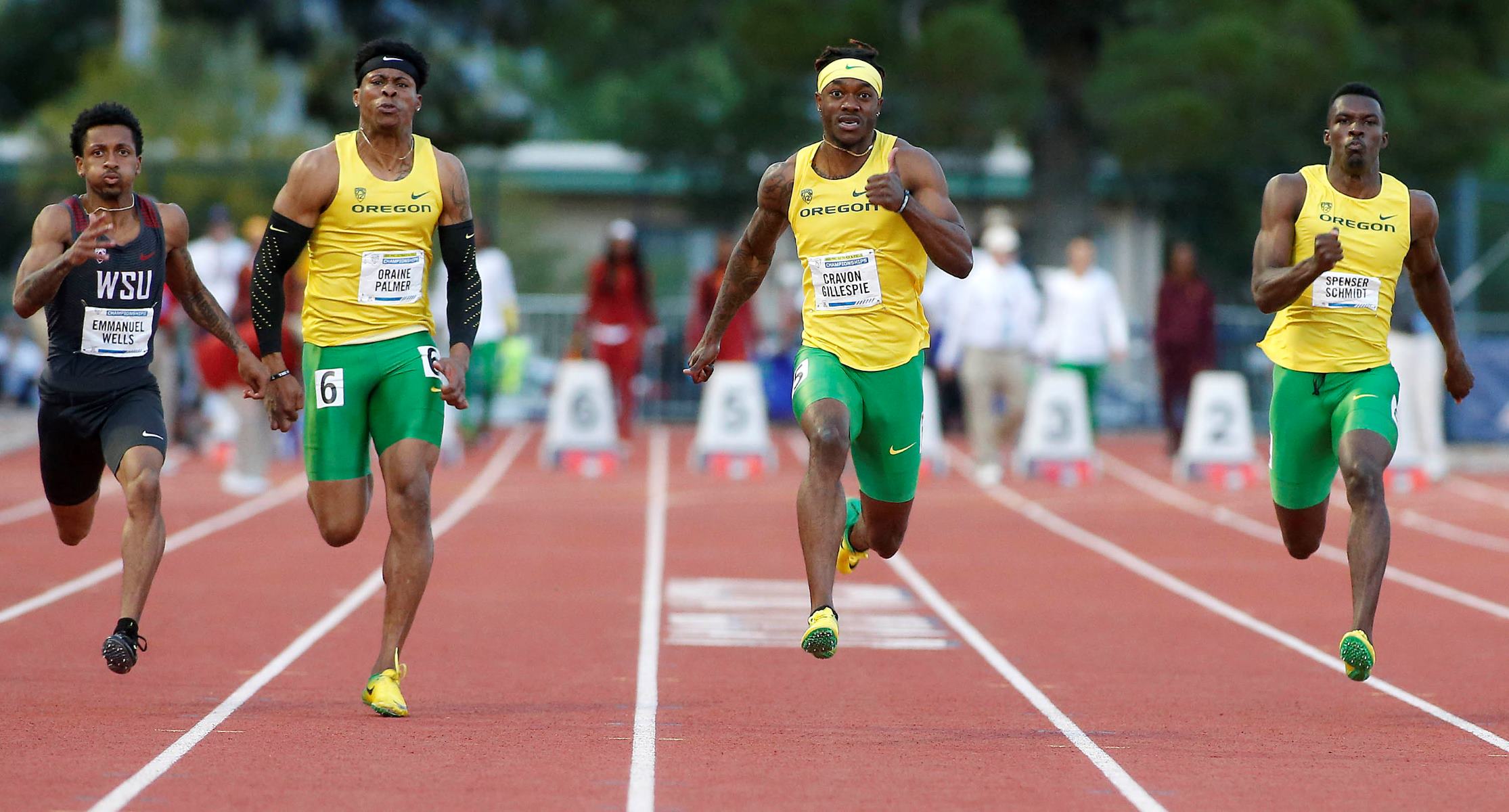

Featured
What Does DNS In Track And Field Mean
Published: September 5, 2023
Learn what DNS in track and field means and how it impacts the race. Featured article on the key term "DNS".
Introduction
Welcome to the world of track and field, a thrilling sport that showcases the speed, agility, and endurance of athletes from around the globe. In any track and field event, spectators eagerly anticipate witnessing the athletes push their limits and compete at the highest level.
However, in the midst of the exhilaration, there are moments when a name is called out, but no athlete steps forward to take their place on the starting line. This is known as a DNS, which stands for “Did Not Start.” While it may seem like a minor occurrence, DNS can have a significant impact on the dynamics of a track and field event.
In this article, we will delve into the meaning of DNS in track and field, exploring its implications on athletes, teams, and the overall competition. We will examine the reasons why athletes might choose not to start a race, as well as the strategies athletes and teams can employ to avoid DNS.
So, whether you are a track and field aficionado or simply curious about the inner workings of this fascinating sport, join us as we explore the world of DNS in track and field and uncover its significance. Let’s dive in!
Overview of DNS in Track and Field
DNS, or “Did Not Start,” is a term commonly used in track and field to describe a situation where an athlete, despite being registered for a race, does not take their position on the starting line. It is a significant occurrence in the world of track and field, as it impacts not only the athlete who does not start, but also the competition as a whole.
When an athlete is listed as a DNS, it means they do not compete in the event they were scheduled to participate in. This could be due to various factors such as injury, illness, fatigue, or tactical decision-making by the athlete or their coach. Whatever the reason, a DNS signifies that the athlete will not have the opportunity to showcase their skills and compete against their peers.
In track and field, DNS can occur in individual races such as sprints, hurdles, long-distance events, as well as in team events like relays. It is also encountered in field events such as high jump, pole vault, long jump, and shot put. Regardless of the specific event, a DNS has repercussions not only for the athlete but also for the team they represent.
From a logistical standpoint, DNS can disrupt the scheduling of events, as the absence of an athlete can create gaps and delays in the competition. It can also affect the mood and atmosphere of the event, as spectators who were eagerly anticipating a particular athlete’s performance may be left disappointed.
Furthermore, DNS has an impact on the overall dynamics of the competition. With one less athlete competing, the race may lose its competitive edge and intensity. The absence of a strong contender can alter the strategies and tactics of the remaining athletes, potentially changing the outcome of the event.
Publicly, DNS is usually declared before the event, allowing organizers to make necessary adjustments to the race lineup. However, there are instances where an athlete may decide not to start at the last minute, resulting in an unexpected DNS. Such situations can create a sense of anticipation, as spectators and competitors wonder why the athlete chose not to participate.
In the next section, we will explore the importance of DNS in track and field events and delve into the reasons why athletes may choose not to start a race.
Importance of DNS in Track and Field Events
DNS, or “Did Not Start,” carries significant importance in track and field events, influencing the dynamics of the competition and shaping the experiences of both athletes and spectators.
One of the key reasons why DNS is important in track and field is that it reflects the physical and mental challenges that athletes face. In a sport that demands peak performance and relentless dedication, injuries and illnesses are common occurrences. When an athlete decides not to start due to these reasons, it illuminates the sacrifices and risks they take to participate in the sport.
Moreover, DNS highlights the strategic aspects of track and field. Coaches and athletes carefully analyze the strength and weaknesses of their opponents, adjusting their race plans and tactics accordingly. When an athlete chooses not to start, it alters the dynamics of the race, forcing other competitors to recalibrate their strategies on short notice. This adds an intriguing layer of unpredictability to the competition.
Furthermore, DNS impacts team events in track and field, such as relays. In team events, the absence of a key runner can disrupt the cohesion and synchronization of the team. Other team members must adapt and potentially alter their positions and roles to compensate for the missing athlete. This places additional pressure and responsibility on the remaining team members to perform at their best.
Spectators also play a critical role in track and field events, with DNS affecting their experience as well. When a well-known athlete fails to start, it can lead to disappointment and a shift in the excitement and anticipation surrounding the event. This dynamic creates a ripple effect within the audience, as their energy and support may shift towards other athletes who are now in the spotlight.
Overall, DNS adds an element of mystery and unpredictability to track and field events. It emphasizes the physical and mental challenges of the sport and highlights the strategic decision-making by athletes and coaches. Moreover, DNS showcases the resilience and determination of athletes who prioritize their long-term health and well-being over short-term success.
Now that we understand the importance of DNS in track and field events, let’s explore some of the common reasons why athletes may decide not to start a race.
Common Reasons for DNS in Track and Field
There are various reasons why athletes may choose not to start a race in track and field, ranging from physical and mental factors to strategic considerations. Understanding these reasons provides insight into the challenges that athletes face and the complexities involved in their decision-making process.
One of the primary reasons for DNS in track and field is injury. Athletes push their bodies to the limit, subjecting themselves to intense training and rigorous competition. Unfortunately, injuries are an inherent risk in such a demanding sport. When an athlete is nursing an injury, they may decide not to start a race to avoid exacerbating the condition or risking further harm.
Illness is another common cause of DNS. Athletes are not immune to colds, flu, or other ailments. When an athlete is feeling under the weather, it can significantly impact their performance and their ability to compete at their best. As a result, they may choose not to start the race to prioritize their health and prevent the potential spread of illness to other competitors.
Fatigue and overexertion can also lead to DNS. As athletes engage in intense training regimens and compete in multiple events, their bodies may reach a point of exhaustion. A tired and fatigued athlete may not be able to perform at their peak level, and in such cases, they may opt to skip a race to allow for adequate rest and recovery.
In some cases, athletes strategically decide not to start a race. This can occur when they have multiple events in a competition and need to conserve energy for more important or challenging races. By strategically choosing to DNS in less critical events, athletes can optimize their performance in events where they have a higher chance of success.
Lastly, weather conditions can also influence an athlete’s decision to DNS. Extreme heat, heavy rain, strong winds, or adverse weather conditions may make it unsafe or impractical to compete. In such cases, organizers or officials may make the decision to cancel or postpone the event, or athletes may decide not to start for their own safety and well-being.
These are just a few of the common reasons why athletes may choose not to start a race in track and field. It is important to recognize and respect the decisions made by athletes, as they prioritize their health, well-being, and long-term performance over short-term success.
Now that we have explored the common reasons for DNS, let’s shift our focus to understanding the impact of DNS on athletes and teams.
Impact of DNS on Athletes and Teams
The occurrence of DNS, or “Did Not Start,” in track and field events can have a profound impact on both individual athletes and their respective teams. From psychological implications to strategic considerations, DNS has far-reaching consequences in the world of competitive athletics.
For individual athletes, DNS can be a source of disappointment and frustration. It represents a missed opportunity to showcase their abilities and compete against their peers. Additionally, athletes may experience a sense of guilt or regret if they feel that they have let down their team or themselves by not starting the race. The mental toll of DNS should not be underestimated as athletes often invest tremendous time, effort, and emotion into their preparation for competitions.
In team events, DNS can disrupt team dynamics and strategy. It may require last-minute changes to relay orders or substitutions, affecting the overall performance of the team. The absence of a key athlete can also impact team morale and confidence, as teammates may feel the weight of added pressure to compensate for the missing member.
The impact of DNS extends beyond the athletes and teams directly involved. Spectators and fans who were eagerly anticipating a particular athlete’s performance may feel let down or deprived of a thrilling competition. The absence of a notable contender can diminish the excitement and energy surrounding the event, potentially affecting ticket sales and viewer engagement.
Furthermore, DNS can have a ripple effect on the outcome and dynamics of the race. The absence of a strong competitor can change the race dynamics, altering the strategies and tactics of the remaining athletes. This alteration in the field can lead to unexpected results, demonstrating the influence DNS can have on the competitiveness and outcome of an event.
From a logistical perspective, DNS may require adjustments to the race schedule, leading to delays or gaps in the competition. Organizers may need to reassign lanes, reorganize heats, or fill the vacancy left by the DNS with a substitute runner. These adjustments can impact the overall flow and timing of the event.
Ultimately, the impact of DNS on athletes and teams serves as a reminder of the unpredictability and challenges inherent in competitive sports. It underscores the importance of adaptability, resilience, and the ability to navigate unforeseen circumstances. Athletes and teams must learn to manage the ramifications of DNS and use it as motivation to strive for success in future competitions.
Now that we have explored the impact of DNS on athletes and teams, let’s discuss strategies that can help athletes avoid DNS in track and field events.
Strategies to Avoid DNS in Track and Field
To minimize the occurrence of DNS, or “Did Not Start,” in track and field events, athletes and teams can implement several strategies. By prioritizing injury prevention, maintaining optimal health, and strategically planning their competition schedule, athletes can increase their chances of participating in races and avoiding DNS.
First and foremost, injury prevention is paramount. Athletes should incorporate proper warm-up and cooldown routines into their training. Stretching, mobility exercises, and dynamic warm-ups can help prepare the body for the demands of track and field. Additionally, athletes should work closely with coaches and trainers to develop a safe and progressive training plan that includes rest days and appropriate recovery strategies.
Regular medical check-ups and physical screenings can aid in identifying potential health issues before they develop into more serious problems. Athletes should consult with healthcare professionals to address any underlying health conditions and seek appropriate treatment or guidance. Maintaining a balanced and nutritious diet, along with adequate hydration, is also crucial for overall health and injury prevention.
Strategic planning and careful consideration of the competition schedule are essential to avoid overexertion and fatigue. Athletes should work with coaches to establish realistic goals and prioritize their races based on their strengths, weaknesses, and long-term objectives. This approach allows for adequate rest and recovery between events, reducing the risk of DNS due to fatigue or excessive workload.
Communication between athletes and coaches is key in ensuring that decisions regarding the participation in races are made collaboratively. Athletes must feel comfortable discussing their physical and mental well-being with their coach, enabling the coach to provide guidance and support in making informed decisions. This open line of communication can help athletes determine if they are fit to compete or if it is in their best interest to skip a race and prioritize their long-term athletic development.
Lastly, adaptability is crucial in navigating unforeseen circumstances that may lead to DNS. Weather conditions, organizational changes, and unexpected injuries do occur. Athletes and teams need to be mentally prepared to adjust their plans and strategies, making the most of the situation at hand rather than dwelling on what could have been.
By implementing these strategies, athletes and teams can work towards minimizing the occurrence of DNS in track and field events. Prioritizing injury prevention, maintaining optimal health, strategic planning, and adaptability are essential for athletes to stay on track and compete at their best.
Now that we have explored strategies to avoid DNS, let’s summarize the key points discussed in this article.
Conclusion
In the world of track and field, DNS, or “Did Not Start,” is a significant occurrence that can have far-reaching implications. Whether due to injury, illness, fatigue, strategic decision-making, or adverse weather conditions, DNS impacts athletes, teams, and the overall dynamics of the competition.
We have explored the meaning of DNS in track and field, recognizing its importance in reflecting the physical and mental challenges athletes face. DNS highlights the strategic aspects of the sport and emphasizes the sacrifices made by athletes in their pursuit of excellence.
Furthermore, we have delved into the common reasons for DNS, ranging from injuries and illnesses to fatigue and strategic considerations. Understanding these reasons provides valuable insight into the complexities involved in an athlete’s decision not to start a race.
The impact of DNS on athletes and teams is significant, with missed opportunities, disrupted team dynamics, and altered race outcomes. Furthermore, DNS can affect spectators and the overall atmosphere of the event, emphasizing the interconnection between athletes and their supporters.
To minimize the occurrence of DNS, athletes and teams can implement various strategies, including injury prevention, optimal health management, strategic planning, and adaptability. These strategies enable athletes to compete at their best while reducing the risk of DNS due to physical and mental factors.
In conclusion, DNS is a noteworthy aspect of track and field events that reveals the challenges, strategies, and resilience of athletes. By understanding DNS and implementing effective strategies, athletes can navigate the complexities of the sport and enhance their chances of participating in races. With a commitment to physical and mental well-being, athletes can showcase their skills and strive for success in the captivating world of track and field.









